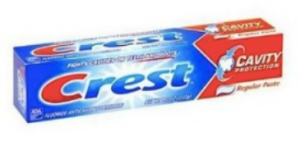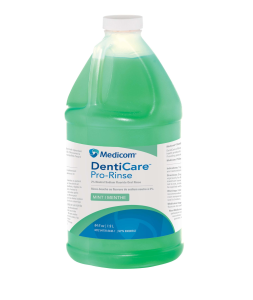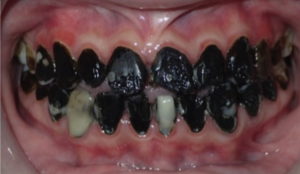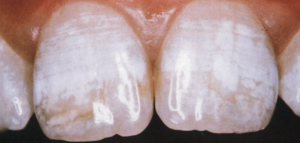Maintaining oral health is crucial for overall well-being, and fluoride treatment is a dentist’s number one treatment strategy in protecting teeth from decay. This comprehensive guide aims to explain the significance of fluoride, how it works, and its various forms and applications in dental care. It also discusses the controversy surrounding fluoride treatment. Understanding these aspects will help you make informed decisions about your dental health and what treatment to receive.
Why do Dentists Recommend Fluoride Treatment?
To realize why dentists recommend fluoride, it’s essential to understand the composition of teeth and how decay, better known as cavities, occurs.
Understanding Tooth Decay

- Tooth Structure: Our teeth have a hard outer layer called enamel and a softer layer underneath called dentin.
- Tooth Decay: When we eat sugary foods, bacteria in our mouth produce acids that can attack the enamel, causing it to weaken and form cavities.
- Demineralization and Remineralization: When acids attack, minerals in the enamel are lost (demineralization). However, our saliva can help repair the enamel by depositing minerals back (remineralization).
How Does Fluoride Help?
Fluoride protects our teeth in several important ways:
- Strengthens Enamel: Fluoride helps rebuild (remineralize) weakened enamel, making it stronger and more resistant to acids. It does so by replacing the fluorapatite crystals with hydroxyapatite crystals.
- Reduces Acid Impact: It makes it harder for acids to damage the enamel.
- Fights Bacteria: Fluoride can reduce the ability of bacteria to produce harmful acids.
- Desensitization: It can help reduce tooth sensitivity.
Types of Fluoride Treatments
Fluoride treatment can be broken down into two main types; systemic (which is typically ingested) and topical (which is applied directly to the teeth.
Water Fluoridation
Many communities add fluoride to their drinking water, which helps protect everyone’s teeth. This method ensures that people get a consistent and safe amount of fluoride daily. Water fluoridation is considered one of the top 10 greatest achievements of public health.
Dietary Supplements
In areas without fluoridated water, fluoride supplements like tablets or drops might be recommended. These are usually prescribed by a dentist or physician and are especially beneficial for children during their tooth development years.
Fluoride Toothpaste

Most toothpastes contain fluoride, which helps protect our teeth each time we brush. Dentists recommend using fluoride toothpaste because it provides a direct application of fluoride to the enamel. However, it has some of the lowest concentrations of fluoride compared to professional treatment options. This is a safety precaution to prevent a patient from accidentally ingesting too much fluoride, which has negative side effects discussed later in this article.
Fluoride Mouth Rinses

These can be used daily or weekly to provide extra protection. They are particularly useful for people at higher risk of cavities, such as those with braces or dry mouth.
Professional Fluoride Treatments

Dentists can apply high-concentration fluoride treatments during check-ups, especially for those at higher risk of cavities. These treatments can be in the form of gels, foams, or varnishes and are applied directly to the teeth. There are three types of professional fluoride options, with fluoride varnishes being the safer and most effective option:
- 1.23% acidulated phosphate fluoride (APF) as a gel or foam delivered in fluoride trays.
- 2.0% sodium fluoride (NaF) as gel delivered in trays (Neutral pH) or rinses
- 5% sodium fluoride as a varnish painted on the teeth.
Silver Diamine Fluoride (SDF)

This treatment is used to stop existing cavities from getting worse, particularly in children and older adults who are unable to sit still for a filling. It is a liquid applied to the cavity, and it not only helps to prevent further decay but also kills bacteria and hardens the softened tooth structure. However, its downside is that it permanently stains teeth and is not always 100% successful.
Is Fluoride Safe?
While fluoride is supported by numerous health organizations, including the CDC, Health Canada, and the World Health Organization, some controversies exist. Concerns about fluoride’s potential toxicity and links to health issues like reduced IQ and various diseases have been raised.
However, extensive research supports the safety and effectiveness of fluoride in preventing tooth decay. It has included that fluoride consumption is well within safe limits. To determine how much fluoride is safe to take you can use the following calculations:
Fluoride Calculations
Fluoride concentration in products is usually expressed in parts per million (ppm) or as a percentage of fluoride ion. For example:
- 1 ppm: 1 mg of fluoride in 1 liter of water.
- Toothpaste: Standard fluoride toothpaste typically contains around 1,000-1,500 ppm fluoride.
Systemic Fluoride Dose
The appropriate dose of fluoride depends on age, cavity risk, and the fluoride concentration in the water supply. For instance:
- Infants (6 months – 3 years): 0.25 mg/day if water fluoride is <0.3 ppm.
- Children (3-6 years): 0.5 mg/day if water fluoride is <0.3 ppm.
- Older children and adults: Up to 1 mg/day based on caries risk.
Fluorosis

Excessive fluoride intake during the formative years of teeth can lead to fluorosis, which appears as white spots or streaks on the enamel. Severe fluorosis can cause brown discoloration and enamel pitting. It is crucial to monitor fluoride intake to avoid this condition.
Conclusion
Fluoride treatment is a cornerstone of modern dental care, significantly reducing the risk of tooth decay. Understanding how fluoride works, its various applications, and the importance of appropriate dosage can help you maintain a healthy smile. It is essential to make informed decisions about fluoride use based on reliable information and professional guidance. Discussing fluoride treatment options with your dentist can help you determine the best preventive measures for your oral health.
Disclaimer
The contents of this website, such as text, graphics, images, and other material are for informational purposes only and are not intended to be substituted for professional medical advice, diagnosis, or treatment. Nothing on this website constitutes the practice of medicine, law or any other regulated profession.
No two mouths are the same, and each oral situation is unique. As such, it isn’t possible to give comprehensive advice or diagnose oral conditions based on articles alone. The best way to ensure you’re getting the best dental care possible is to visit a dentist in person for an examination and consultation.
SAVE TIME AND MONEY AT ANY DENTIST

Less dental work is healthier for you. Learn what you can do to minimize the cost of dental procedures and avoid the dentist altogether!


Is it important for the fluoride treatment in a dental office to cover the surfaces of the teeth? The younger assistants just quickly run a narrow strip of fluoride around the teeth and don’t “apply” it, as the assistants have always done in the past.